Villains & Vigilantes sans Vexation
How to run Villains & Vigilantes RPG Combat as Smoothly as Possible
Villains & Vigilantes was the second superhero role playing game to be published in the gaming marketplace. The first was Superhero ‘44 (revised as Superhero 2044) and V&V first edition was pretty closely followed by the release of Supergame by Jay and Aimee (Hartlove) Milan. To say that V&V is the second super hero role playing game, though, is slightly unfair to the creators of the game. Jeff Dee and Jack Harmon produced the first fully playable super hero role playing game.
While Superhero 2044 has a playable mechanical foundation, it lacks any real character design component. There are no rules for how to design superpowers in Superhero 2044 and it wasn’t until Wayne Shaw published some rules in The Chaos Lords fanzine that Superhero 2044 was a fully realized game, a game that influenced both Supergame and Champions as both have combat based on Superhero 2044 and Wayne Shaw is credited in early Champions rulebooks for his influence on the character building in that system.
Villains & Vigilantes first edition has a unique combat system, one that I’ll cover in a later post, but it is very rough around the edges. This is probably why the game did not pick up as much steam as it deserved and was quickly displaced by Champions 1st edition (and 2nd edition) as the superhero “big dog.” To be sure, a successful launch at the Origins game convention and Aaron Allston’s advocacy of Champions in the pages of Space Gamer magazine certainly helped Champions move from a regional Bay Area game to a darn successful rpg. But Jeff Dee’s art and an easy to implement character creation system could have made V&V first edition a success if the combat system wasn’t so arcane.
Jeff and Jack quickly moved to address this issue and completely revamped the combat system in a second edition of Villains & Vigilantes. This second edition may not have displaced Champions as the powerhouse in the superhero genre, but it was a strong seller for Fantasy Games Unlimited and it had one of the best marketing campaigns for any role playing game of its era. Have a look at these ads from Dragon Magazine in the early 80s:
What made this ads successful, and one of the things that made me a big fan of V&V after my friend Rob introduced me to the system, was that the combined Dee’s evocative comic book art with statistics that looked vaguely familiar to people who played D&D. Even before I knew the system, I had a good idea of how to interpret the characters in the ads. When I finally did learn the system, it’s similarity to D&D made it easy to learn.
I say “similarity to D&D” because the game used a twenty-sided die, had hit points, and included a combat “to hit” table similar to the ones in the DM’s Guide. Other than that the games are actually very different. One major example of the difference is that Villains and Vigilante’s to hit rolls are “roll under” rolls and that the “to hit” tables are an interaction of attack powers vs. defense powers rather than being “level vs. armor class.”
That interaction of power vs. defense was and is one of my favorite things about the game. Seeing that having an “Android Body” makes it more likely that you are going to be hit by the electricity based “lightning power” added to the game’s verisimilitude. The game wasn’t “effects based” like Champions, but it had flavor galore and a bunch of wonderful products. That interaction of powers vs. defense though did make it more challenging to run the game when I finally decided to try it as the rpg for my gaming group.
At first, I tried to run the game by prepping my adventures narratively and picking out the villains etc., but while relying on the Game Master’s screen to calculate the numbers that the players and villains would need to roll in order to hit their opponents. The players had a good time, but I ended those first sessions a little over worked. It wasn’t hard to look at the charts in game to calculate the to hit rolls, but it did take up more time than I wanted and slowed combats down. And one thing that a superhero rpg really benefits from is a speedy and dynamic combat system.
It took me a while to come up with what I thought was an ideal solution, to calculate all the basic to hit rolls before hand. I knew what attacks and defenses my players’ characters had and I certainly knew the attacks and defenses of the villains. Why wait for “in game” to calculate the base to hit numbers for everyone? Why not do that as part of my prep? So that’s what I did and it worked fairly well, but it did require me to photocopy pages of the book and flip back and forth through the book from time to time causing wear and tear on it and leading me to buy multiple copies (that’s a good thing).
Eventually, I decided to create a spreadsheet that would allow me to quickly calculate the to hit numbers, and was easier on my eyes than looking at the printed page. I’ve included that combat calculator below. It still requires some in game math, it doesn’t include the individual bonuses that high stats will give players, but it’s a really good start. As you can see from this screen cap of it, it’s easy to use.
I imagine you could use it in game, but I prefer to do that pre-game prep. Then you have all the basic information on the character sheets for your villains or on a combat tracker. It makes the game run smoothly and, as you’ll see from a game review I’ll do soon, the 2nd edition of V&V is a very fun game to play.



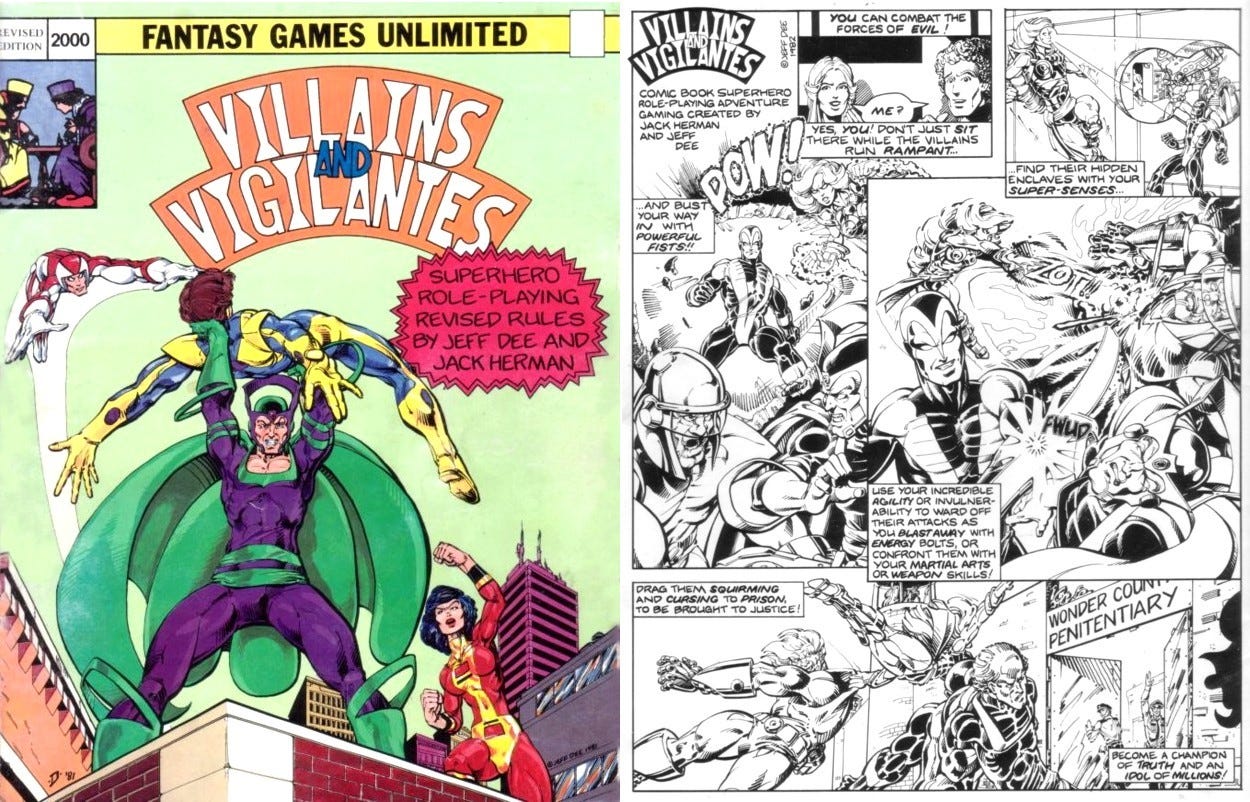

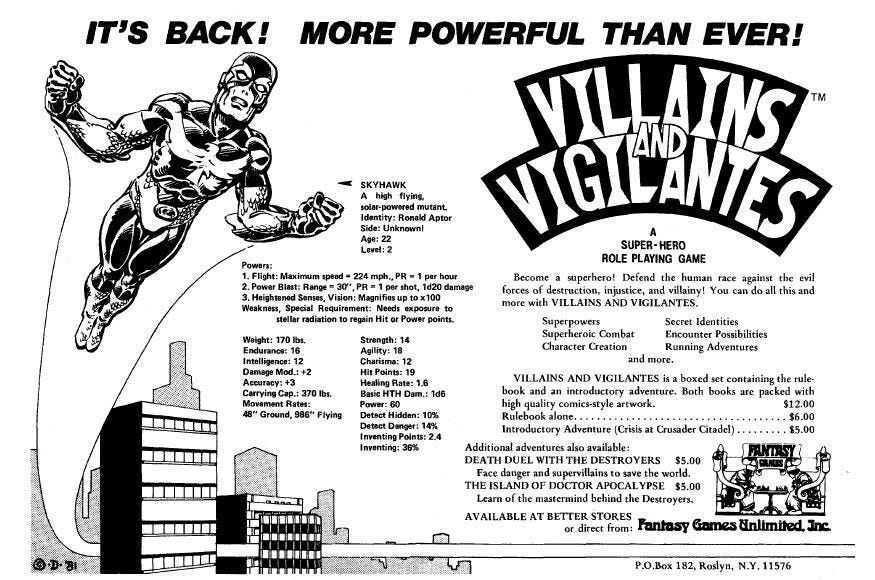
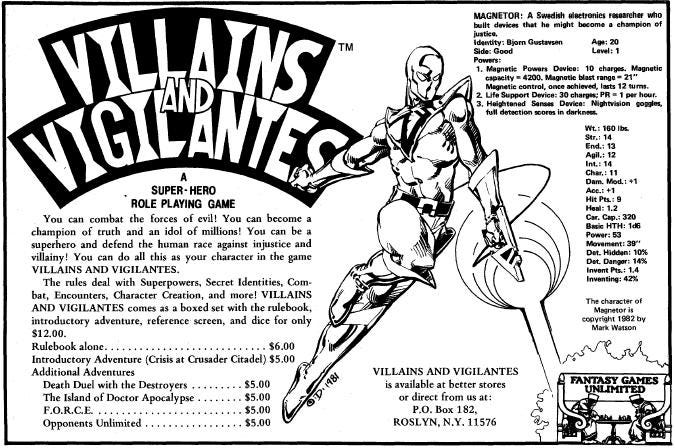
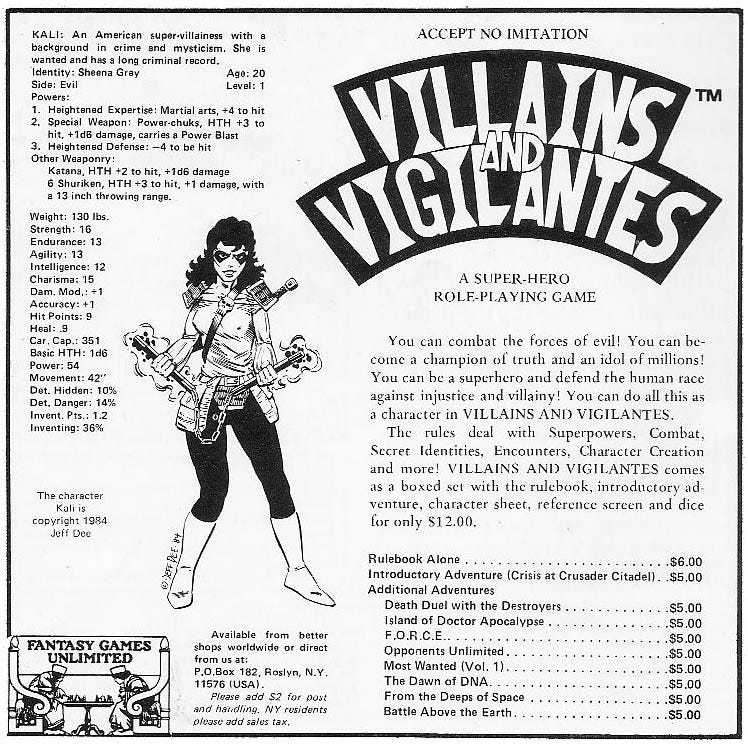

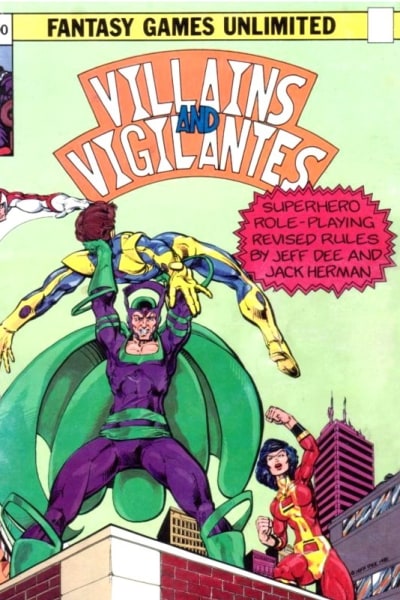
Interesting, though it seems like it didn't catch on not only because of Champions being rolled out to a bigger audience but also because the initial mechanics were choppy. It's similar to Diakatana or Titanfall 2 were the games were so buggy that the audience had left before it could be rectified. Sad, but a story as old as time.